Solar panel mounting systems, also known as mounting and racking systems, play a crucial role in ensuring the efficiency and longevity of solar installations. So, in this article, we explore the fundamentals of mounting systems, the various types available, and how to choose the best one for your solar panels.
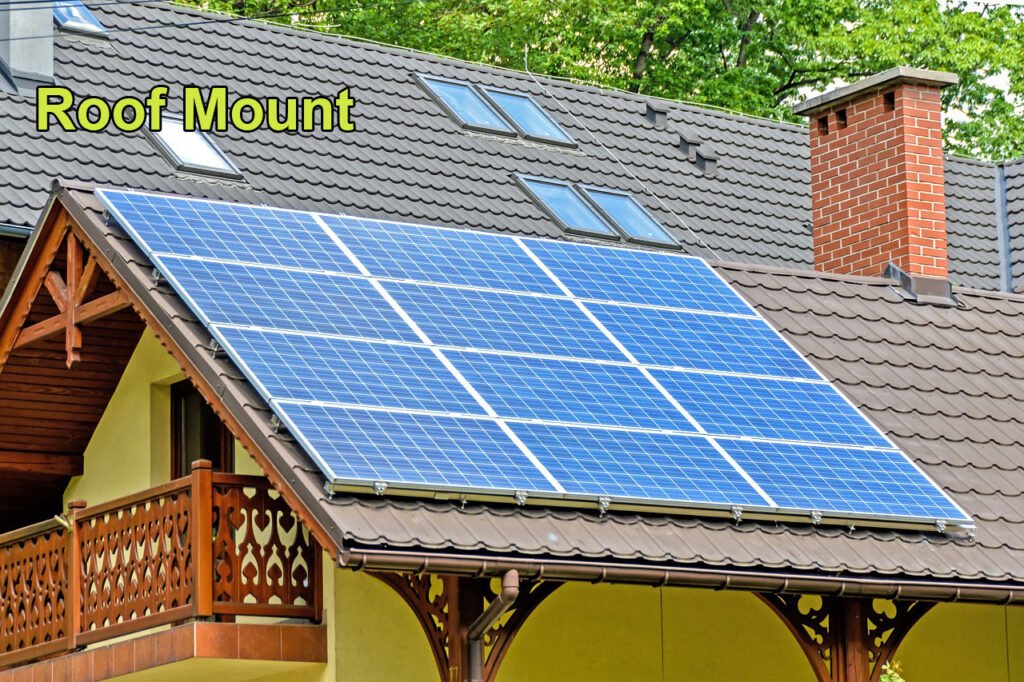
What is mounting and racking?
Mounting and racking is the system that secures solar panels in place, ensuring they are optimally positioned to capture sunlight. This infrastructure is essential for stability, safety, and maximizing energy production. Besides, solar panel mounting systems typically includes structural components, support structures, and hardware necessary to secure solar panels to roofs, the ground, or other surfaces.
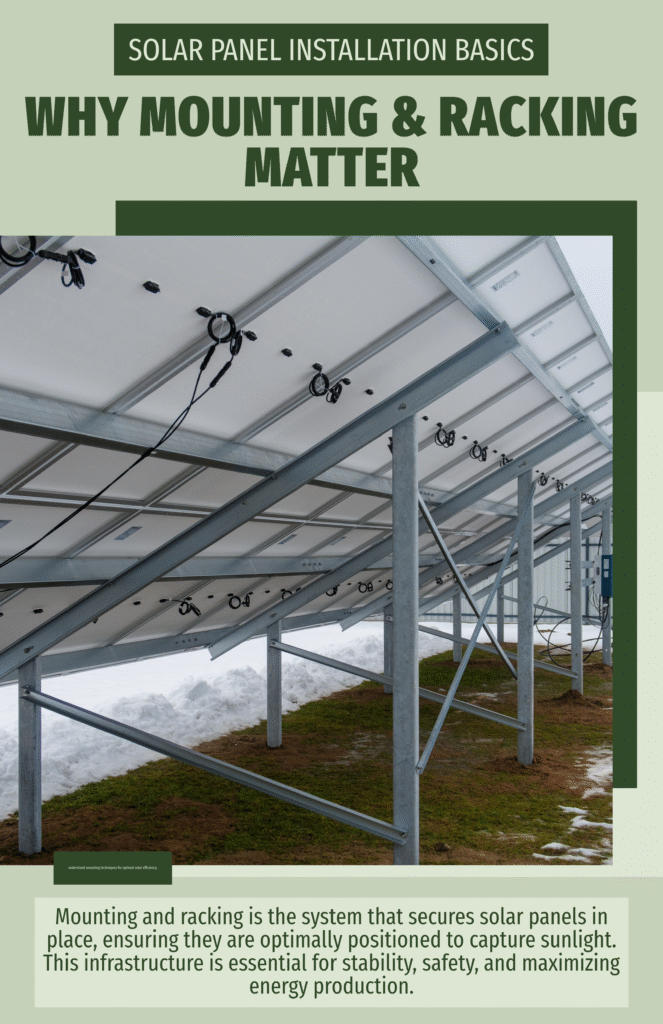
All types of solar panel mounts
Solar mounts, also known as solar panel mounting systems, come in various types, each designed to accommodate specific installation scenarios and requirements. Here’s an overview of the main types of solar mounts:
1. Roof Mounts
Description: Roof mounts are designed for solar panel installations on rooftops. So, they can be attached to the roof structure, ballasted, or integrated into the roof.
Before you choose this type of mount, check if your roof is suitable for it. Not all roofs are ideal for roof mounting.
Pros
Cons
KEY INFO
Remember that installing your panels high up on the roof may make it difficult to access them for cleaning.
2. Ground Mounts
Description: Ground mounts are installed on the ground, providing flexibility in panel positioning. So, they are often used in large-scale solar farms or where rooftop space is limited.
Pros
Cons
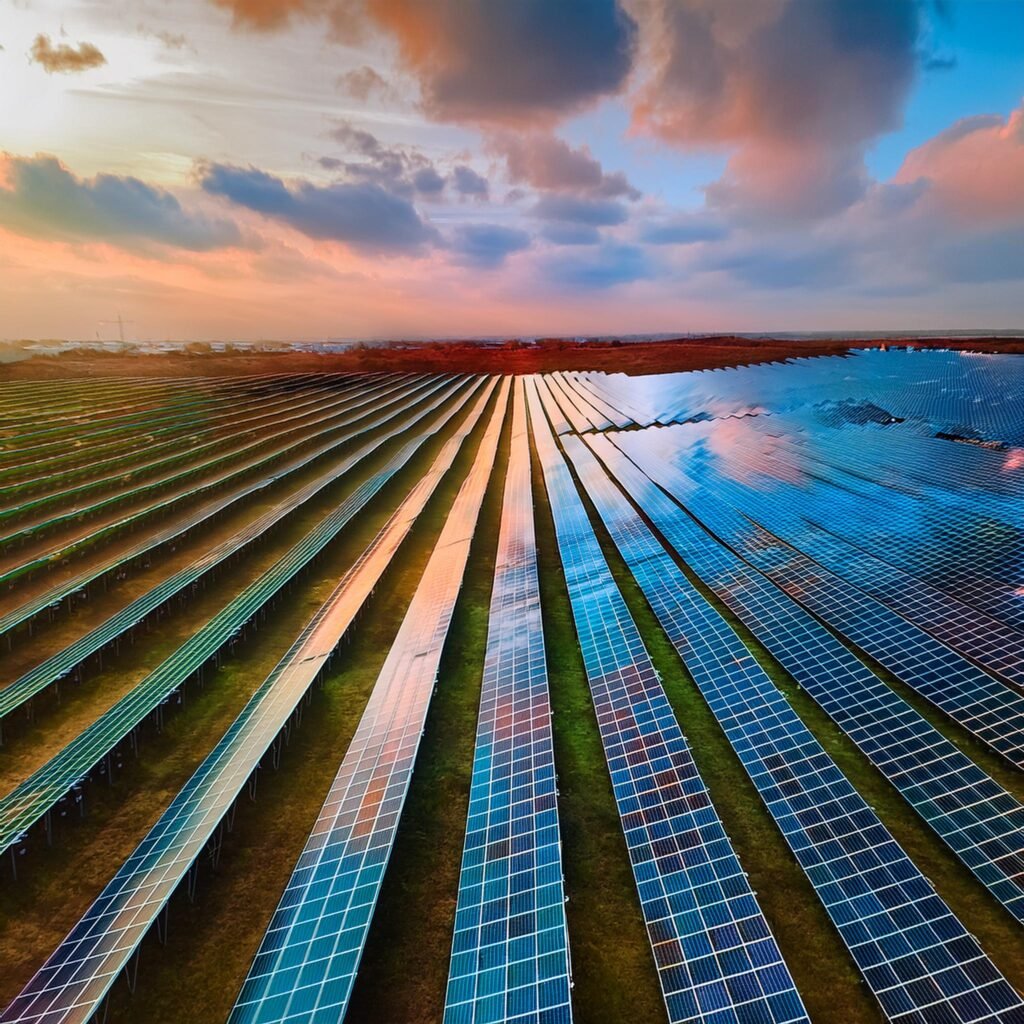
3. Pole Mounts
Description: Pole mounts involve securing solar panels on poles or trackers. Then, this type allows panels to follow the sun’s path for maximum energy capture.
Pros
Cons
4. Carport Mounts
Description: Carport mounts integrate solar panels into the structure of carports or parking structures, providing dual functionality of shade and energy generation.
Pros
Cons
Conclusion
Choosing the right type of solar panel mounting system depends on factors such as available space, geographical location, energy needs, and budget constraints.
What is a module mounting structure for solar panels?
A module mounting structure refers to the framework that supports and positions individual solar panels within an array. In other words, it includes the components needed to attach the solar panels securely and optimise their angle for sunlight exposure.
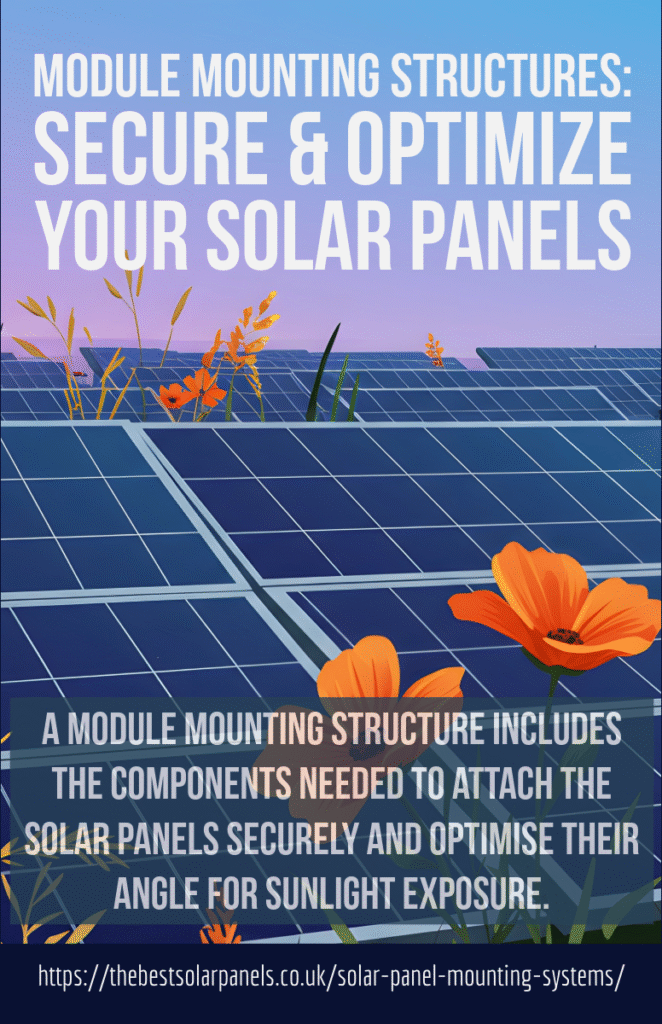
What are Solar Trackers?
If you’ve opted for ground or pole-mounted solar panels, you might have heard about solar trackers. These devices follow the sun’s journey across the sky. So, they constantly adjust the angle of your solar panels to maximise sunlight capture.
The benefit is clear: more sunlight means more electricity generated. However, there’s a big con. Solar trackers can be quite expensive. And often, it’s more cost-effective to simply install more solar panels. That said, a solar tracker could be a worthwhile investment only if you have limited space for panels.
To sum up, while solar trackers can significantly increase your solar panel’s output, the extra cost usually outweighs the benefits unless you’re short on room.
What is the best mounting system for solar panels?
Determining the best mounting system depends on various factors:
- Location: Consider the geographical location and weather conditions to choose a mounting system that can withstand local challenges, such as strong winds or heavy snow.
- Space Availability: Evaluate the available space on your property – whether on the roof, the ground, or in an open field – to determine the most practical mounting solution.
- Regulatory Compliance: Ensure that the chosen mounting system complies with local building codes and regulations.
- Budget Considerations: Factor in your budget for both the solar panels and the mounting system. Some mounting options may have a higher upfront cost but offer long-term benefits.
The best mounting system ultimately depends on your specific circumstances and requirements. For homes, roof mounts may be practical, while ground mounts or trackers could be more suitable for larger-scale projects.
In conclusion, solar panel mounting systems are integral to the success of solar installations. Understanding the different types, components, and factors influencing the choice of a mounting system empowers individuals and businesses to make informed decisions in their journey toward harnessing the sun’s energy for a sustainable future.
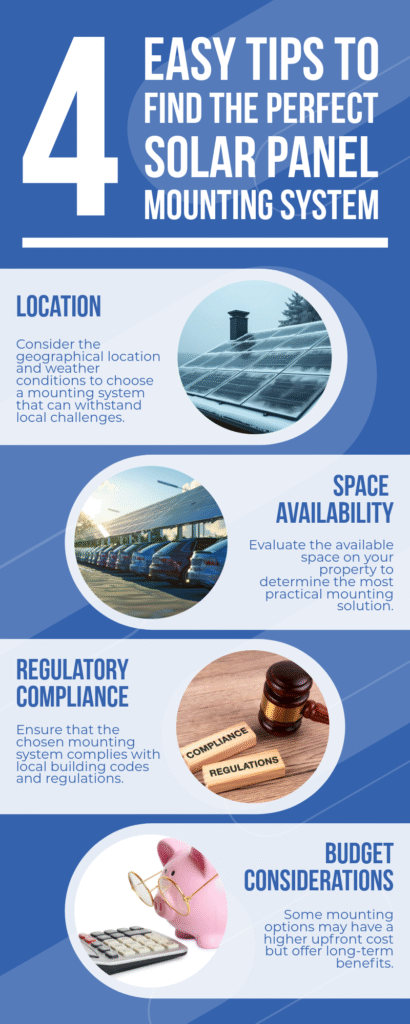
Solar mounting components
Solar mounting components are essential elements of a solar panel system that secure and support solar panels in place. Also, these components ensure the stability, durability, and proper alignment of the solar panels for optimal energy production. Here are the key solar mounting components:
| Component | Description | Function |
| Rails and Frames | Horizontal and vertical structural elements that form the framework for attaching solar panels. | Support and elevate solar panels, facilitating proper orientation for sunlight exposure. |
| Clamps | Devices used to secure solar panels to the mounting structure. | Provide a secure and adjustable grip on the edges of solar panels, preventing movement and ensuring stability. |
| Fasteners and Bolts | Hardware components such as screws, nuts, and bolts are used to assemble and secure various parts of the mounting system. | Ensure the structural integrity of the mounting system by securely fastening components together. |
| Mid and End Clamps | Clamps are specifically designed for securing solar panels in the middle (mid-clamps) or at the edges (end clamps). | Distribute loads evenly, prevent sagging, and maintain the alignment of solar panels within the array. |
| Grounding Equipment | Copper or aluminium wires, grounding lugs, and other components to establish an electrical connection between solar panels and the ground. | Ensures safety by providing a pathway for electrical currents to safely dissipate into the ground. |
| Flashings and Sealants | Waterproof materials are placed around roof penetrations and mounting points to prevent water infiltration. | Maintain the roof’s integrity by creating weather-tight seals, preventing leaks and potential damage. |
| Solar Panel Mounting Hardware | Specific hardware designed for attaching solar panels to the mounting structure, including brackets and clips. | Facilitates the secure attachment of solar panels to the mounting system. |
| Adjustable Tilt Systems | Mechanisms that allow the adjustment of the tilt angle of solar panels to optimize sunlight exposure. | Enhances energy capture by adapting to changing sunlight angles throughout the year. |
| Ballast | Heavy materials, such as concrete blocks, are placed on flat-roof solar installations to provide stability. | Counteracts wind forces and prevents uplift by adding weight to the mounting system. |
| Solar Tracker Components | Motors, sensors, and tracking mechanisms for solar tracking systems that follow the sun’s movement. | Enable solar panels to adjust their position throughout the day, maximizing energy production. |
| Racking Systems | Comprehensive structures that support solar panels, including frames, rails, and attachment components. | Provide the framework for the entire solar panel array, ensuring stability and proper alignment. |
Each of these components plays a crucial role in the functionality and reliability of a solar mounting system. In short, the selection of appropriate components depends on factors such as the type of mounting system, site conditions, and project requirements.
Find your solar mounting kit size
Determining the appropriate solar mounting kit size involves assessing various factors related to your solar panel installation. Here are the steps to help you find the right solar mounting kit size for your project:
1. Evaluate Solar Panel Dimensions:
Panel Size: Determine the dimensions of your solar panels, including length, width, and thickness.
Panel Capacity: Note the wattage or capacity of each panel.
2. Consider Mounting Configuration:
Array Layout: Decide on the layout of your solar panel array, whether it’s a grid, portrait, landscape, or a customized arrangement.
Spacing: Consider the spacing between panels to optimize sunlight exposure.
3. Calculate Total Array Size:
Total Wattage: Calculate the total wattage of your solar panel array by multiplying the capacity of each panel by the number of panels.
Total Area: Estimate the total square footage or square meters covered by your array.
4. Select Mounting System Type:
Roof Mounts: Consider the type of roof mount you’ll be using, whether it’s a flush mount, tilt mount, or other configurations.
Ground Mounts: Determine the spacing and layout of ground-mounted panels.
5. Review Local Regulations:
Permitting Requirements: Check local building codes and permitting regulations that may specify spacing and setback requirements for solar installations.
6. Factor in Tilt and Orientation:
Tilt Angle: If adjustable, consider the tilt angle of the panels for optimal sunlight exposure.
Orientation: Account for the orientation of the panels (north, south, east, west).
7. Consult Manufacturer Guidelines:
Manufacturer’s Specifications: Refer to the specifications provided by the solar panel and mounting system manufacturers for guidance on spacing, array layout, and any specific requirements.
8. Work with a Solar Professional:
Site Assessment: Engage with a solar professional to conduct a site assessment, taking into account shading, local weather conditions, and other site-specific factors.
Structural Analysis: Ensure that the mounting kit is suitable for the structural characteristics of the installation site.
9. Consider Expansion:
Future Expansion: If you plan to expand your solar installation in the future, account for additional space in your mounting configuration.
10. Calculate Mounting Kit Size:
Space Allocation: Based on the above considerations, calculate the required space for your solar panel array.
Number of Mounts: Determine the number of mounting kits needed based on the layout and configuration.
Finding the right solar mounting kit size involves a combination of technical calculations, adherence to regulations, and consideration of specific site conditions.
Conclusion
To sum up, solar panel mounting systems are integral to the success of solar installations. Understanding the different types, components, and factors influencing the choice of a mounting system empowers individuals and businesses to make informed decisions in their journey toward harnessing the sun’s energy for a sustainable future.
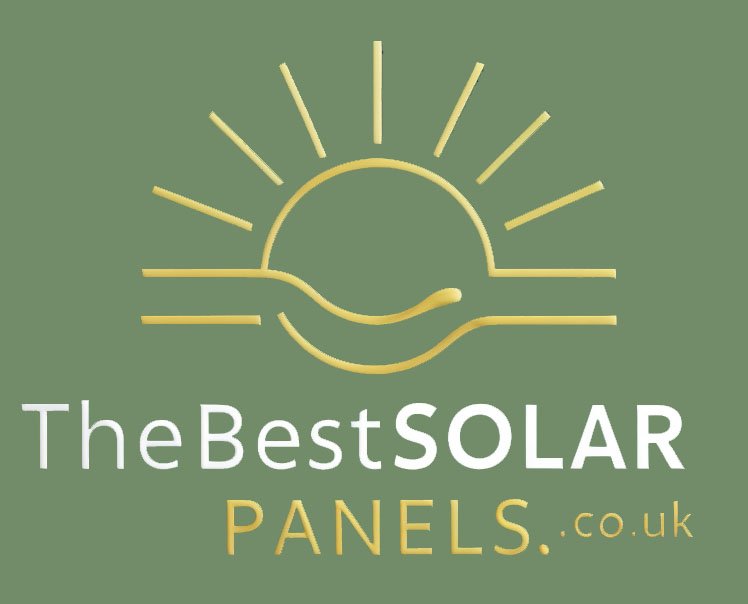
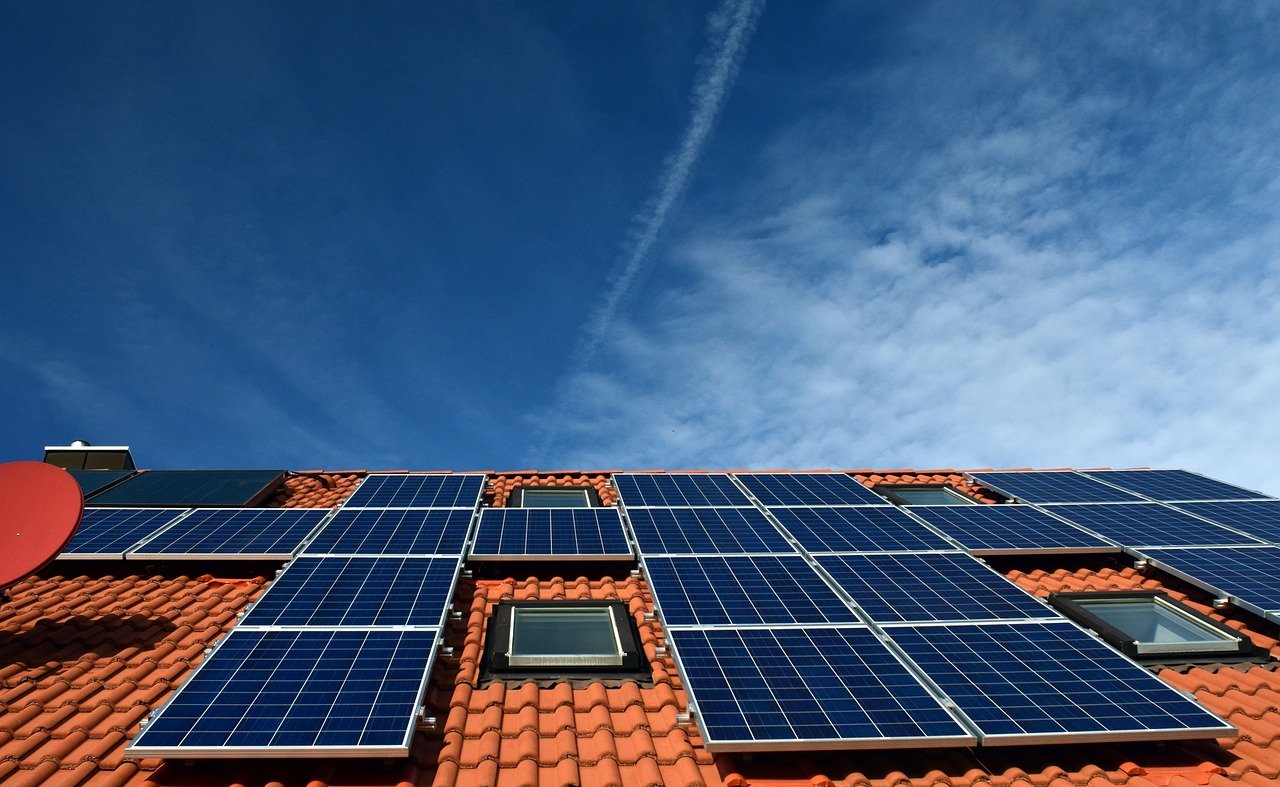
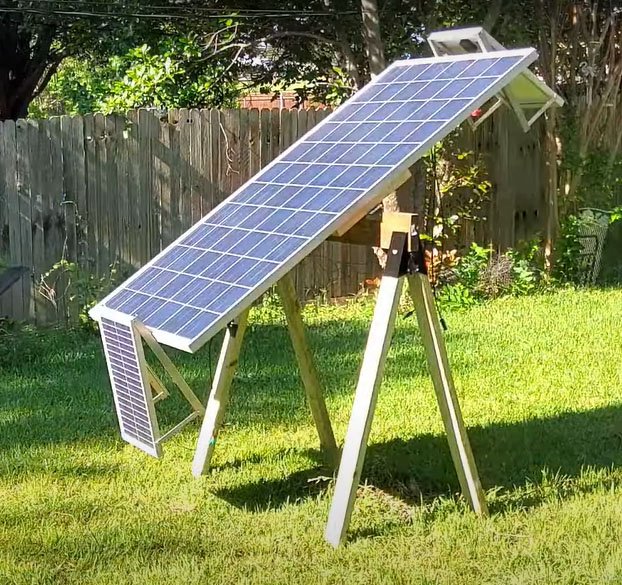


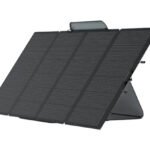
Leave a Reply